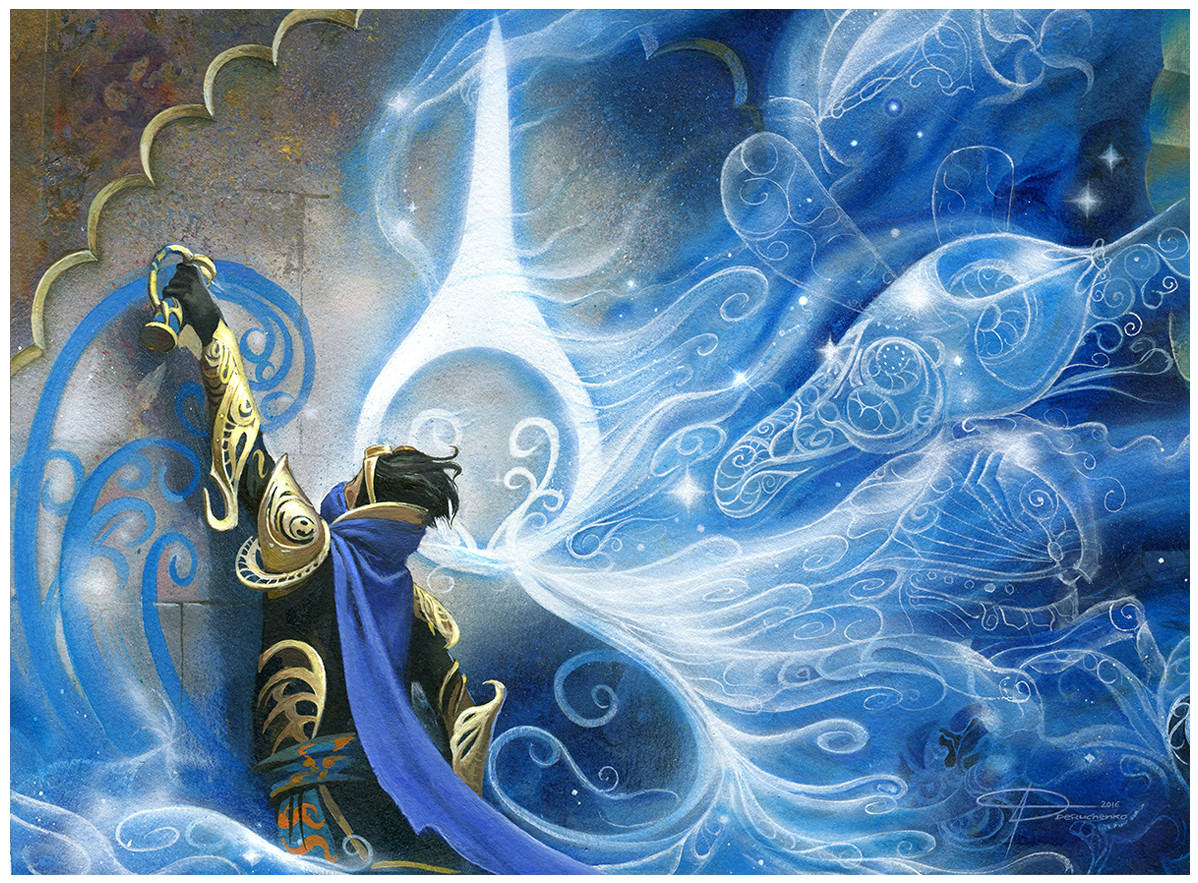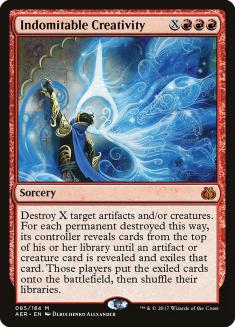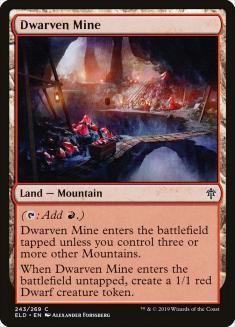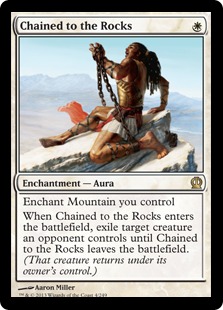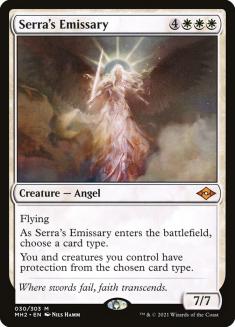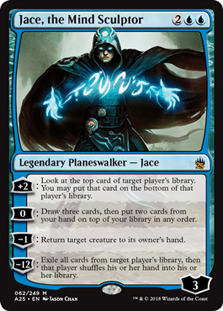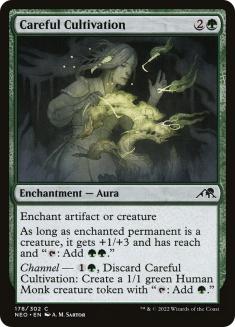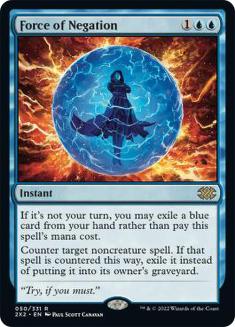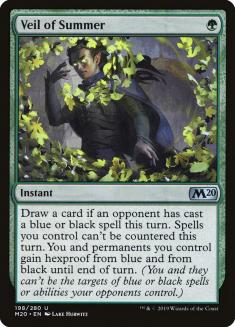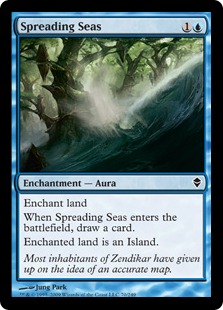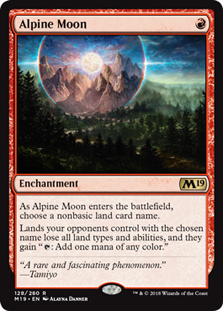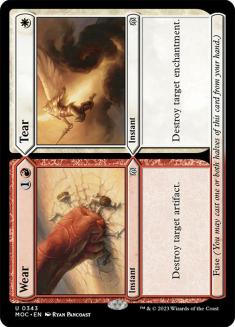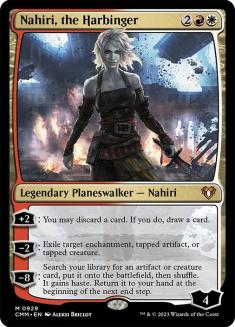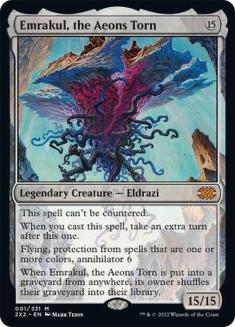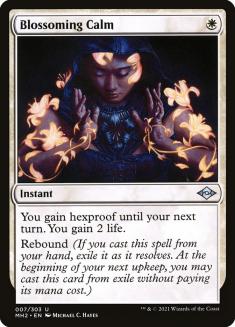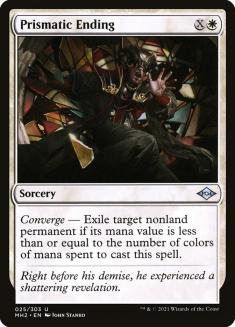I don’t understand. I really don’t.
We all know how powerful combo-control archetypes are in Magic. Splinter Twin continues to grow its legendary status years after it was banned, and trust me, as much as you think you want it back in Modern, you don’t. But try as I might to sing the praises of Four-Color Indomitable Creativity, it just doesn’t seem to be catching on.
However, Four-Color Control decks based around Omnath, Locus of Creation are still quite popular, despite them being relatively similar, but with just their control plan to fall back on. That deck has at least evolved with the recent addition of Ragavan, Nimble Pilferer, but without the over-the-top potential of the combo plan, it’s still a mopey midrange deck that’s trying to consistently win attrition games against the most powerful attrition card ever printed in Lurrus of the Dream-Den.
Frankly, I’m not interested in doing that. I’d rather stall the game out until Indomitable Creativity ends the game on the spot. The only question is whether the cost of playing the combo is too high in terms of the slots it takes to play the combo itself and the resulting costs of playing those cards over more individually powerful cards.
And as it turns out, the opportunity cost for playing Indomitable Creativity is shockingly low. Not being able to play actual creature or artifact cards does limit your options, but not to the point where your deck is lacking in any critical aspect. And the fact that Dwarven Mine is a fetchable half of the combo means you don’t have to devote too much space to token generators. Hard Evidence is an underwhelming card on its own, but in a format with so many Ragavans and Monastery Swiftspears, it’s effective, and Prismari Command is excellent with Wrenn and Six and against Colossus Hammer decks, which are among the most popular in the current Modern metagame.
The main cost comes with the deck’s manabase, because Dwarven Mine requires you to play mostly Mountains. But you have enough room to play a basic Island and Plains for matchups where you don’t want to take early damage, and Ketria Triome and Raugrin Triome ensure that your Mountain-heavy manabase can consistently find four colors of mana. There are games where you’re forced to fetch for shocklands early in order to curve out properly, but taking some extra damage is a low price to pay for such a powerful combo.
The secondary cost is in consistency. Dwarven Mine is awkward to draw early, especially if your hand is depending on Wrenn and Six for extra land drops. Indomitable Creativity has high diminishing returns, especially if your opponent blunts the first copy by answering your tokens, leaving you with no targets for the others. And of course, the creatures themselves are effectively blank pieces of cardboard. Some lists try to get around this by playing Primeval Titan or Archon of Cruelty as their Creativity targets, but I prefer the power of Emrakul, the Aeons Torn and Serra’s Emissary.
Archon and Titan also require you to bend the manabase even further to accommodate some black mana sources and Valakut, the Molten Pinnacle, respectively. As the manabase of the deck is already stretched, I’d rather not push it even further.
So overall, you’re paying some extra life and some consistency for the privilege of playing a clean, powerful combo in your control deck. That’s a price I’ll gladly pay, because being able to turn the corner from control to ending the game quickly is a huge benefit when you’re playing against the diverse array of powerful decks that Modern throws at you. Last weekend at SCG CON: Philadelphia, I played against the following archetypes:
- Gruul Charbelcher
- Izzet Midrange (twice)
- Golgari Yawgmoth
- Boros Burn
- Grixis Death’s Shadow
- Mono-Red Eldrazi
- Jeskai Control
- Mono-Green Tron
That slate can play fast combo games, aggressive games with creatures, or long attrition games with plenty of card advantage. And they also represent a wide range of potential disruption elements that you have to plan for, whether it’s discard, counterspells, removal, or tricky permanents like Ensnaring Bridge and Blood Moon. You can only give these decks so many draw steps before they find cards that are powerful enough to claw back into a game, so I want to slam that door shut as quickly as possible.
I’ve previously written about Four-Color Indomitable Creativity here, but it’s time to update it, because there’s no way this deck should be as scarce as it currently is. I posted a 7-2 record in the tournament last weekend, losing both my matches to Izzet Midrange. But if not for a critical mistake on my part in one of those matches, I could have easily been in the Top 8.
Here’s the list I played last weekend:
Creatures (2)
Planeswalkers (10)
Lands (25)
Spells (23)

The main change from my previous list was the addition of Chained to the Rocks over Lightning Bolt. The sad reality is that Lightning Bolt is rather mediocre in the current Modern metagame. There are too many threats it doesn’t answer, and Prismatic Ending and Unholy Heat cover the one-mana threats that Lightning Bolt can’t. With Prismatic Ending as the primary removal spell in this list, I was worried about Murktide Regent specifically, and Chained to the Rocks is excellent against it. And if you exile a token or a threat like Walking Ballista with it, you have the opportunity to bounce it later on with Teferi for extra value.
You do have to worry about Field of Ruin and Spreading Seas answering your Chains. But the former isn’t widely played right now and the latter is mostly found in decks where you take out Chained to the Rocks anyway, like Azorius Control. So the downside is minimal and the upside is significant, making your removal suite more versatile without sacrificing mana efficiency.
In the sideboard, the major addition is the second copy of Serra’s Emissary. There are several matchups where you want to hit the Angel over Emrakul, most notably Boros Burn, and where a second Emissary will effectively lock up the game. In closed-decklist tournaments, it’s harder to figure out exactly when this is the case, but you should have a strong understanding of what the stock decklists look like and use your judgment from there.
Past that, Spreading Seas was a concession to big mana decks and Urza’s Saga, but is far from a necessity, so whether it stays or not will be entirely up to how the metagame evolves. I also went with an Ancient Grudge over the second Wear // Tear to help against Colossus Hammer decks, but ended up playing against so many Blood Moons that I wished I had the second enchantment removal spell.
Lastly, I decided to play Negate over Dovin’s Veto, which you see more often because Negate is much easier on the deck’s mana. The upside of Veto is relevant, but not enough to offset the awkward turns when you have to tap your only white source for a Teferi or Prismatic Ending and don’t have your counterspell up anymore.
Here’s the list I would play now, based on what I learned over the weekend:
Creatures (2)
Planeswalkers (11)
Lands (25)
Spells (22)
- 4 Fire
- 2 Chained to the Rocks
- 4 Indomitable Creativity
- 3 Force of Negation
- 2 Prismari Command
- 4 Prismatic Ending
- 3 Hard Evidence
Sideboard

As you can see, not many changes, but the biggest one is the inclusion of a second copy of Jace, the Mind Sculptor. In games where your opponent has easy answers to Creativity, I felt the deck needed another game-ending threat it could play towards, and Jace is the best one available since you have so many fetchlands to use with the Brainstorm ability, and it helps to put your Creativity targets back in your deck.
Putting the creatures into your library rather than the graveyard is particularly important when you go on the double Angel plan and sideboard out the Emrakul, so Jace was an easy choice. I chose to cut a Prismari Command because Jace replaces the functionality of turning drawn creatures into usable cards, and Command is a relatively mana-inefficient, underpowered card, so you don’t want to draw too many copies. If Colossus Hammer decks pick up again I’ll go back to three, but for now I’m happy with two.
I also wanted another Rest in Peace since the card has overperformed as a way of shutting down threats like Dragon’s Rage Channeler, Tarmogoyf, and Murktide Regent in addition to its obvious application as a piece of graveyard hate. The anti-synergy with Wrenn and Six as well as stopping Emrakul from shuffling back into your library is a concern, but not one that outweighs the card’s power. Plus, you can more easily win games without the combo with the second copy of Jace in the deck now.
The easiest way to make space for the second Rest in Peace was to move the Force of Negation to the maindeck and cut the singleton Spell Pierce. It’s not much of a loss. If I find I need more counterspells as the metagame shifts, the Spreading Seas slots in the sideboard are flexible.
How to Play the Deck
The most important piece of advice I can give you regarding the deck is to think of it as a control deck first and a combo deck second. You’re in no rush to go for the combo unless you’re quickly falling behind against a deck like Boros Burn or Mono-Green Tron. And you should work to make the combo as safe as possible, either by casting Creativity with X greater than two to play around spot removal, or ideally sticking a Teferi, Time Raveler and casting Creativity on your opponent’s end step.
Along with this conservative play style, you don’t want to expose your Dwarves unnecessarily. Sometimes they can be used to pressure planeswalkers or block a Ragavan, which is fine. But you don’t want to just make Dwarves without any plan for how to use them immediately. There are some specific matchups where you’re more aggressive with them, and I’ll note them in the sideboard guide below.
This is why I don’t like the newly printed Careful Cultivation in this deck. The benefit to the card is to be able to turbo out a Creativity for X=1 on Turn 3, but that’s not my goal. I want to trade resources, use my planeswalkers to get ahead, and then find a spot in the mid-game to slam the door shut before my opponent claws back into the game. So don’t be seduced by the promise of a quick kill, because that’s how you open yourself up to unnecessary blowouts.
The key cards in this deck are really Wrenn and Six and Teferi, Time Raveler. They are incredibly powerful and let you pull far ahead in games starting on Turn 2 while still being relevant on Turn 10. If you can establish one or both of these planeswalkers on the battlefield, everything else comes along easily. With Wrenn, your mana becomes perfect, and you always have the tokens you need to threaten Creativity. And with Teferi, all your interaction is even better, and your Creativities are unstoppable. Creativity is mainly there to clean up the games these cards are winning or save games where they are dealt with.
Sideboarding
VS Grixis Death’s Shadow (Lurrus)
Out:
In:
This matchup is tricky since they have such a great combination of pressure and disruption, with Lurrus always looming if you try to play a straight attrition game. But one advantage you can leverage is the fact that you don’t do any incidental damage to them early to set up fast Death’s Shadows. That both slows them down and forces them to self-inflict ten or more damage, to the point where your burn spells and Dwarf tokens can steal a game if they’re not careful.
Rest in Peace has overperformed here. It not only limits the effectiveness of Lurrus and Dragon’s Rage Channeler, it also shuts off Drown in the Loch, their primary counterspell. That limits the versatility of their disruption package, making it easier to play through their interaction.
This is a matchup where you could play double Emissary and name creature and instant, but that’s dangerous against discard, since if you lose one of them, you’re never safe.
VS Orzhov Hammer (Lurrus)
Out:
In:
You have to respect their combo, and that means lowering the curve and bringing in plenty of interaction. You also want to turn the corner quickly since they’re so resilient, and that means keeping in the Emrakul so that you have a powerful hit off Creativity for X=1 that doesn’t lose to a Path to Exile.
VS Boros Burn (Lurrus)
Out:
In:
Another matchup where expensive cards come out for cheaper interaction. But here you want the second Angel over Emrakul, since with Creativity for one you always want to hit the Angel and name either instant or sorcery based on what your opponent has played thus far. When in doubt, name instant first, since that’s how they answer your creatures.
VS Izzet Midrange
Out:
In:
This matchup is tricky because counterspells are the hardest thing to play against for a deck with so many sorcery-speed threats at three or more mana. Sticking Teferi is thus important, but their burn spells and Ragavans mean it’s never safe. Focus on keeping the pressure off you because they don’t have many threats and will eventually run out of answers. And since you’re playing a long game anyway, you can usually afford to fetch basics early to play around Blood Moon.
I don’t like Force of Negation here because its casting restriction means it’s much better at countering opposing threats than it is at protecting your own, and the spells you’re countering in this matchup are usually their counterspells on your threats. Fire // Ice isn’t great, but Ice can take down their counter wall on key turns if they’re not careful, so look for those opportunities.
VS Four-Color Control (Yorion)
Out:
In:
Emissaries on creature and planeswalker will lock up the game against most builds of this deck, but if they have Path to Exile or some other form of removal, then you can play the Emrakul and name creature as your default with the one Angel. Normally Chained to the Rocks would be great here, but it’s a liability against their Spreading Seas, so ours, which are much worse, have to come in. If they aren’t playing a build with Seas, then leave in the Chains of course.
This matchup is mostly a battle of sticking Teferi, since yours makes it impossible for them to answer Creativity and theirs makes it much easier for them to contain Creativity. Focus on establishing your planeswalkers and you should be fine, because you go bigger than them.
VS Amulet Titan
Out:
In:
Emissaries on creature and land win the game, so I like that plan here, especially because they do little to interact with your combo beyond Engineered Explosives to clean up the tokens in response. You have plenty of answers to it, so just contain them until you can resolve a game-ending Creativity.
VS Golgari Yawgmoth
Out:
In:
Their sideboard is usually Thoughtseize and Necromentia, so Veil is great here. The heavy discard is also why I don’t like going on the two-Emissary plan. Also, if they’re on Zulaport Cutthroat over Blood Artist, they can win through the Emissaries. Fire // Ice is a mediocre removal spell here against all the undying creatures, and you don’t want to play too much removal anyway. Just try to keep Yawgmoth, Thran Physician off the battlefield or blunt its effectiveness with Rest in Peace.
Your first Angel can either name creature to stop Blood Artist and Geralf’s Messenger, or planeswalker to stop Grist, depending on the situation.
VS Temur Crashcade
Out:
In:
Teferi is the name of the game in this matchup, since it completely shuts down their main plan and stops their counterspells. Protect it at nearly all costs. Blood Moon is tricky out of their sideboard, but they don’t usually have much pressure, so you can afford to fetch basics aggressively.
I like the second Emissary against the Temur versions since naming creature and instant will lock up the game, but the Four-Color variant with its own Teferis makes that plan much worse, so keep in the Emrakul.
VS Azorius Control
Out:
In:
This matchup is tricky. You play almost entirely at sorcery speed, which is exactly what heavy-counterspell decks want. They also have Supreme Verdict, which can answer your creatures no matter what you name with Emissary. You really need to lean on your planeswalkers first and foremost, and use those to force them to interact on their turn to open a window to hammer them.
This is also a matchup where you can try to leverage your Dwarf tokens, both to pressure their planeswalkers and to present a clock that will force them to blink first. If you’re expecting more control in your tournament, Shark Typhoon can replace Spreading Seas in the sideboard. It’s a great way to present a big threat without playing into their counterspells or committing mana on your turn.
VS Mono-Green Tron
Out:
In:
This is another matchup where they have a sweeper that can answer your creatures, this time Oblivion Stone. I still don’t like Teferi because it’s hard to find a time to land it without opening yourself to a big threat, so you have to try hard to keep them off Urzatron. Ice on a land on Turn 2 is a surprisingly strong play that usually buys you an extra turn to set up, so I keep them all in.
You can also try to tap a land later on after putting a creature on the battlefield in order to keep them off the eight mana for Oblivion Stone. But the easiest way to win is to turbo out your Emrakul and hold up Force of Negation before they have mana for Ulamog, the Ceaseless Hunger.

